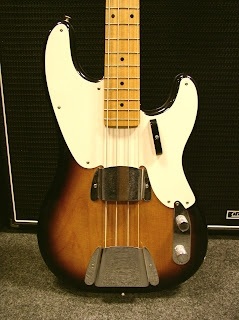
The Electric Bass Guitar
#story
The origin of the electric bass guitar dates back to 1951, in the United States. Its creator was Leo Fender. Fender built its design to alleviate the space and sound problems of the double basses of the time by drastically reducing the body, incorporating electrical amplification and adding frets.
The first model was called Fender Precision Bass, and not by chance: compared to double basses (which have a completely smooth fingerboard, like a violin, where the player must have a well-developed technique to produce tuned heights), the new instrument incorporated frets (to know exactly where the finger is placed, height correct). The appearance of the frets made the bass tuning much more precise. It is said that, since there were no strings or electric bass pegs at that time, Fender used double bass pegs, and piano strings. The Precision has a pickup very similar to that of the Stratocaster, but with four magnets instead of 6, and a tuner of the type of the Telacaster guitar.
The obvious relationship between guitar technique and that of the “bass guitar” led Gibson to think of a new model, which it named EB-1, which was released in 1953, shaped like a violin, hollow box, whose peculiarity was the short scale of the neck, 305 inches (the Fender Precision, 34). This feature results in smaller frets, that is, shorter distances, which made it more accessible to guitarists, and loss of body in the sound, as there is less string in vibration.
- Comments (3)
- Recommended
- Milestones



Here are your recommended items...
Here are your milestones...





